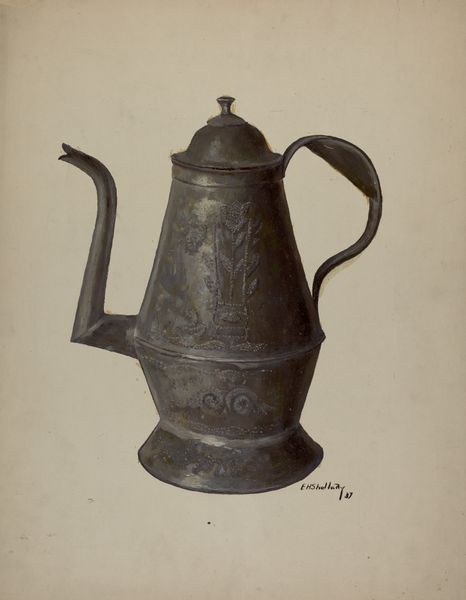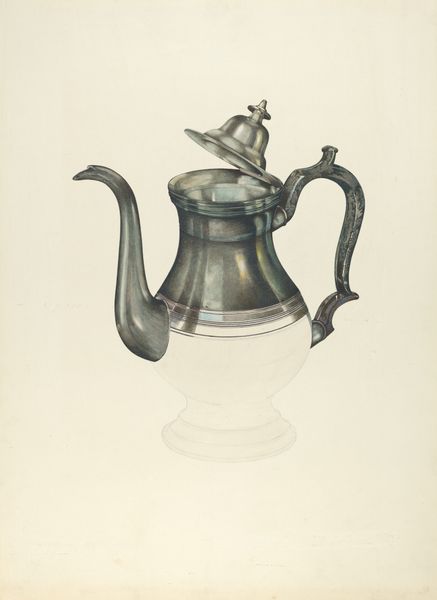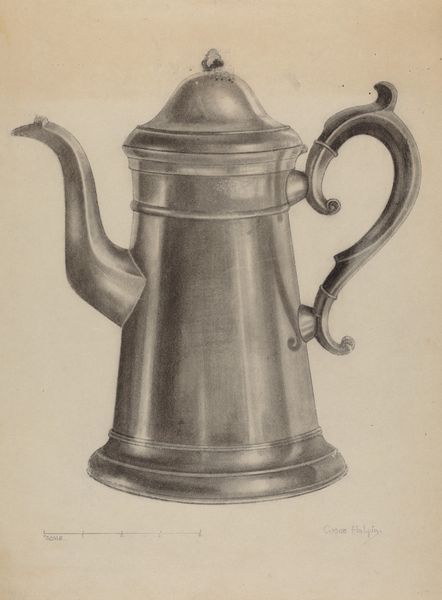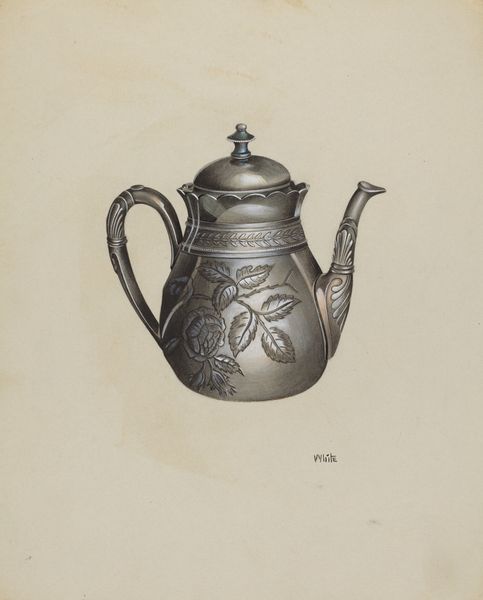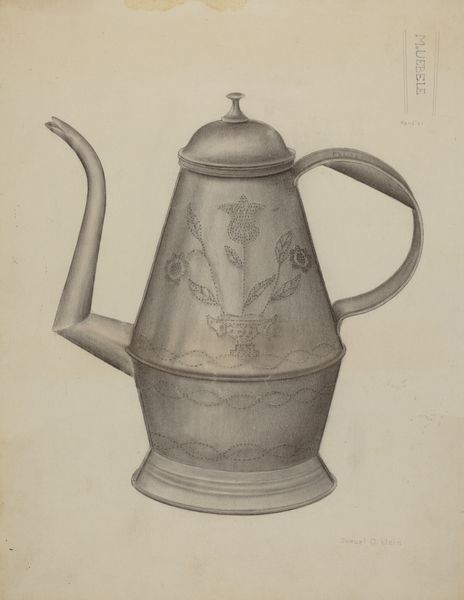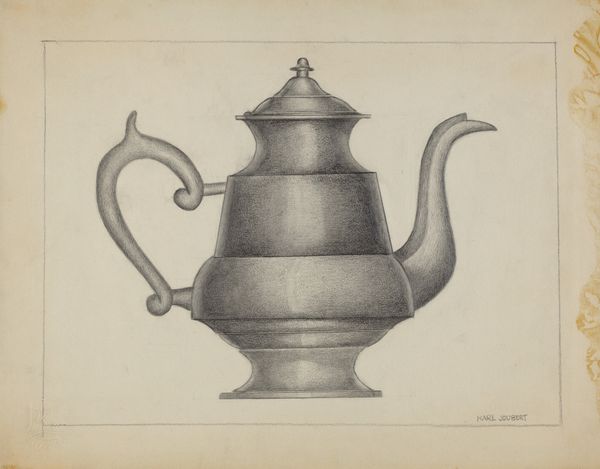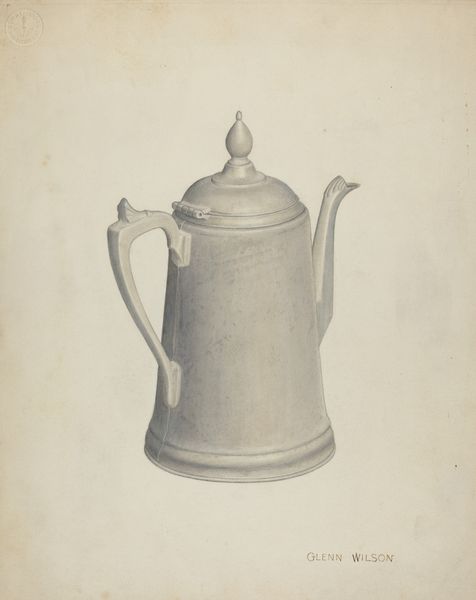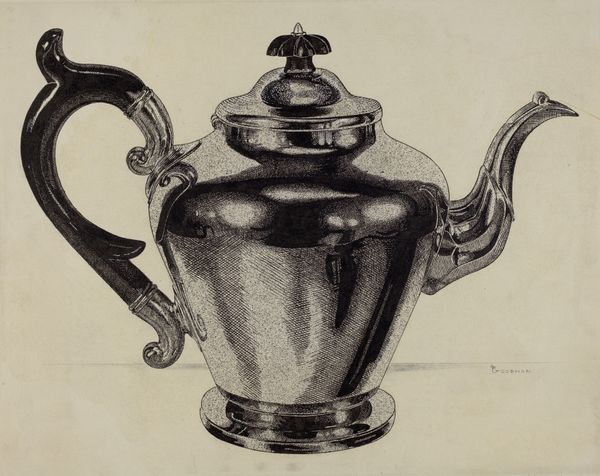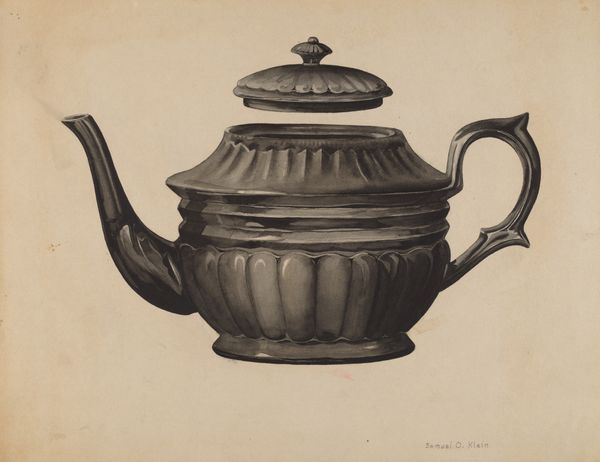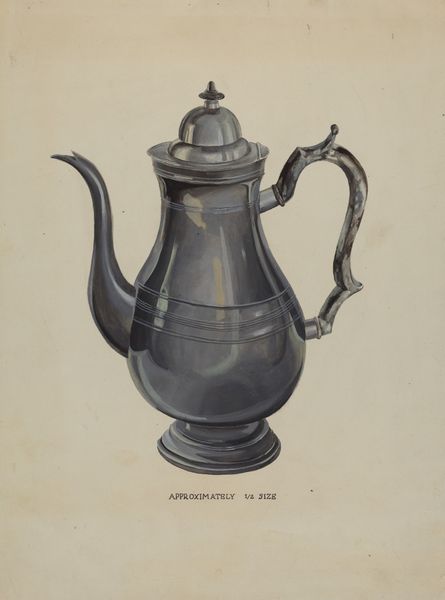
drawing, watercolor, pencil
#
drawing
#
watercolor
#
pencil drawing
#
coloured pencil
#
pencil
#
watercolour illustration
#
academic-art
Dimensions: overall: 35 x 24.3 cm (13 3/4 x 9 9/16 in.)
Copyright: National Gallery of Art: CC0 1.0
Editor: This is Harry Mann Waddell’s "Pewter Syrup Jug," created around 1937. It's a lovely little drawing, done with watercolor and pencil. There's a sort of quiet stillness about it... What do you see in this piece? Curator: I see a study in power dynamics, actually. While ostensibly a simple domestic object, the jug embodies class and gender hierarchies of the period. Look closely at the finial—a woman's head adorns the lid, seemingly relegated to a decorative function. Do you see how the gaze is averted, almost submissive? Editor: I didn't notice that, but I do see the tiny face! It’s kind of hidden, really. Almost like an afterthought? Curator: Precisely! Now, consider the broader historical context. In the 1930s, domestic roles were rigidly defined. Objects like this jug, meant for serving and display, reinforced those roles. The materiality itself—pewter—speaks to a certain level of affluence, subtly signifying class distinctions. How does this drawing speak to art and gender? Editor: That makes me think about the artist, too. Would he have been aware of that message or was it subconscious? Maybe it's more about the formal qualities – the light on the metal, the shape… Curator: The artist's intent is always a slippery thing, isn't it? But whether conscious or not, the drawing participates in a visual language that reflects the social order of the time. These seemingly innocuous depictions often carry weighty ideological baggage. Do you notice something odd when comparing with art nowadays? Editor: Absolutely! Thinking about art as a language and looking for all these hidden or not-so-hidden ideas really changes how I see everyday images and objects. Thank you for your guidance, Curator! Curator: And thank you. Recognizing the complex layers embedded within even the simplest images helps us critically examine our present, too.
Comments
No comments
Be the first to comment and join the conversation on the ultimate creative platform.

